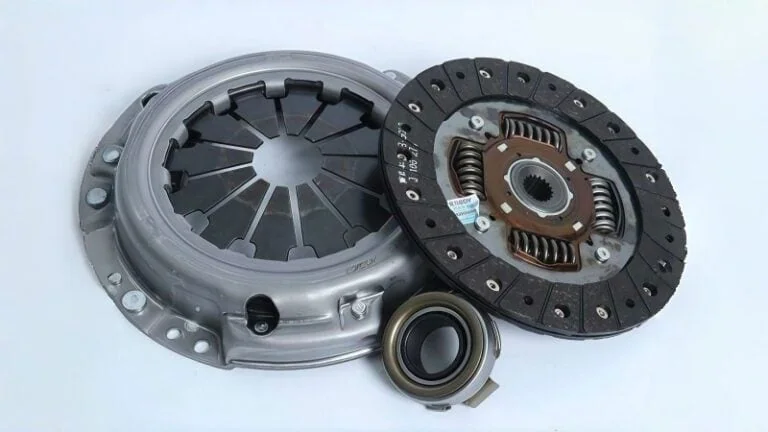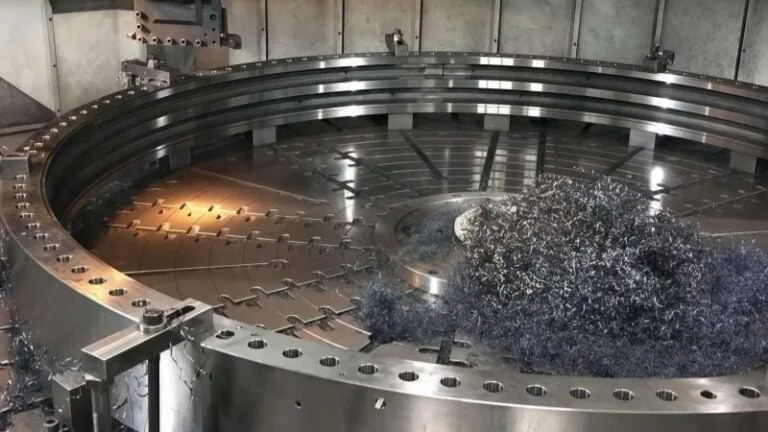-
Whatsapp: +86 13526572721
-
Email: info@zydiamondtools.com
-
Address: AUX Industrial Park, Zhengzhou City, Henan Province, China
-
Whatsapp: +86 13526572721
-
Email: info@zydiamondtools.com
-
Address: AUX Industrial Park, Zhengzhou City, Henan Province, China

Why Use PCD Ball Nose End Mills and How to Choose the Right One?
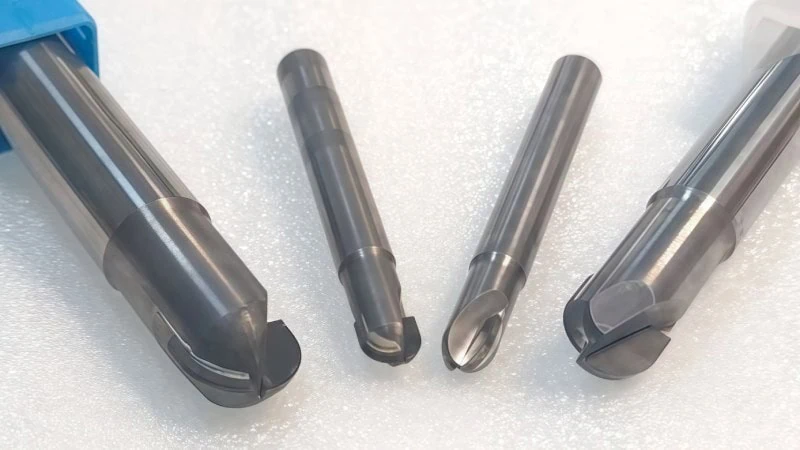
When should you consider using PCD ball nose end mills, and what’s involved in making the right choice?
PCD ball nose end mills are the optimal choice primarily for machining abrasive non-metals (like composites, graphite) and non-ferrous metals requiring excellent finishes on complex 3D surfaces; selecting the correct tool involves matching diameter, radius, flute count, and length to the specific application, while achieving success also depends critically on tool quality, machine rigidity, appropriate operating parameters, and effective chip/coolant management.
What Makes PCD Ball Nose End Mills Superior for Certain Tasks?
So, considering all the tool options out there, what really gives PCD ball nose end mills the edge for certain demanding machining jobs?
PCD ball nose end mills offer exceptional superiority for specific tasks primarily due to their extreme wear resistance, which ensures long-lasting precision in contouring, their unique ability to produce outstanding surface finishes on challenging materials thanks to the combination of PCD hardness and ball geometry, and their suitability for high-speed finishing operations. This often translates to significantly better performance and tool life compared to traditional carbide ball nose tools in relevant applications.
Extreme Wear Resistance and Tool Life Extension
One of the standout features of PCD (Polycrystalline Diamond)1 is its incredible hardness, second only to natural diamond. Think of it like using a cutting edge made of tiny, ultra-hard crystals bonded together through a sintering process2. Consequently, when this material is used on a ball nose end mill, the tool resists wearing down much, much longer than standard tools like those made from carbide, especially when machining abrasive materials.
Why does this matter specifically for a ball nose?
- Maintaining Radius Integrity: Ball nose end mills are often used for long machining cycles, tracing complex 3D contours. PCD’s wear resistance ensures the tool’s rounded profile—the precise radius—doesn’t degrade quickly. This maintains part accuracy throughout the entire process, which is crucial for applications like mold making.
- Reduced Tool Changes: Significantly longer tool life means fewer stops to change worn tools. This directly leads to more efficient production, less machine downtime, and greater consistency from part to part. Imagine tracing a complex shape; you wouldn’t want the tip to wear down halfway through.
While specific tool life can vary greatly based on the exact material being cut, machine conditions, and tool quality, it’s common to see PCD ball nose tools last many times longer than their carbide counterparts in the right applications. Always consult with your tooling supplier for realistic life expectancy data based on your specific situation.
Achieving Superior Surface Finishes on Difficult Materials
Achieving a mirror-like finish, especially on tricky materials, is where the combination of PCD and the ball nose shape truly shines. The smooth, rounded geometry of the ball nose naturally helps in creating flowing surfaces with minimal cusp marks (the tiny ridges left between passes).
Furthermore, PCD adds several advantages:
- Sharp, Durable Edge: PCD can be honed to a very sharp edge, and critically, it maintains that sharpness when cutting abrasive materials like high-silicon aluminum, carbon fiber reinforced polymers (CFRP), or metal matrix composites (MMC). Carbide tools tend to dull or micro-chip quickly in these materials, leading to rougher surfaces.
- Reduced Material Adhesion: In non-ferrous materials like aluminum or copper, PCD exhibits less tendency for the workpiece material to stick to the cutting edge (built-up edge or BUE). This sticking effect is a common cause of poor surface finish with other tool materials.
The result? Parts often come off the machine with a much smoother surface finish (a lower Ra, or Roughness Average, value), significantly reducing or even eliminating the need for secondary polishing operations. This is a major benefit in industries where surface quality is paramount, like mold and die or aerospace. The exact surface finish achievable depends heavily on the material, cutting parameters, and machine stability, so refer to supplier data for specific capabilities.
Enabling High-Speed Machining Capabilities
High-Speed Machining (HSM) isn’t just about moving fast; it’s about efficient and precise material removal, often using lighter cuts at much higher speeds. PCD is well-suited for HSM strategies, particularly for finishing passes with a ball nose end mill.
Here’s why:
- Thermal Stability: PCD can withstand higher temperatures generated during high-speed cutting without losing its hardness or edge integrity, unlike carbide which can degrade more rapidly under extreme heat.
- Sustained Performance: Its wear resistance allows the tool to maintain performance at higher RPMs and feed rates for longer durations, especially crucial during the extensive machining times required for complex 3D surfaces typical of ball nose work.
This means you can often complete finishing operations much faster using a PCD ball nose tool compared to carbide, directly impacting cycle times and productivity. Of course, successful HSM requires a rigid and capable machine tool (as discussed later), but the PCD tool itself enables these faster strategies on suitable materials. Specific speed and feed recommendations vary widely, so always start with supplier guidelines and adjust based on your setup.
Key Differences: PCD vs. Carbide Ball Nose End Mills
While both PCD and solid carbide tools are available in ball nose geometries, they serve different purposes and excel in different areas. Understanding their key differences3 helps in choosing the right tool for the job.
Comparative Overview
| Feature | PCD Ball Nose End Mill | Carbide Ball Nose End Mill | Notes |
|---|---|---|---|
| Primary Materials | Non-ferrous (Al, Cu), Composites, Graphite, Plastics, Ceramics (Green) | Steels, Stainless Steels, Cast Iron, Titanium, Non-ferrous | PCD is generally not suitable for ferrous metals (iron, steel). |
| Wear Resistance | Exceptional | Good to Very Good | PCD excels dramatically in abrasive materials. |
| Tool Life | Very Long (in suitable materials) | Moderate to Long | PCD life can be 10x-100x carbide in optimal conditions.* |
| Surface Finish | Excellent (esp. on abrasive non-ferrous) | Good to Excellent | PCD maintains edge sharpness longer for better finish consistency. |
| Speed Capability | Very High (esp. finishing) | Moderate to High | PCD handles higher speeds in its material range. |
| Toughness | Lower (more brittle) | Higher (less prone to chipping from impact) | Carbide handles interruptions or less stable setups better. |
| Initial Cost | High | Low to Moderate | PCD tools represent a larger upfront investment. |
| Cost per Part | Potentially Very Low | Moderate | Long life and speed can make PCD cheaper per part long-term. |
*Note: Tool life comparisons are highly dependent on the specific application, materials, and machining parameters. Always verify potential performance gains with your tool supplier.
In essence, if you are machining non-ferrous metals, composites, graphite, or abrasive non-metals, and your primary goals involve achieving long tool life and superior surface finishes in 3D contouring or finishing operations, a PCD ball nose end mill is often the vastly superior choice despite its higher initial cost. Carbide remains the go-to for ferrous materials and situations demanding higher toughness.
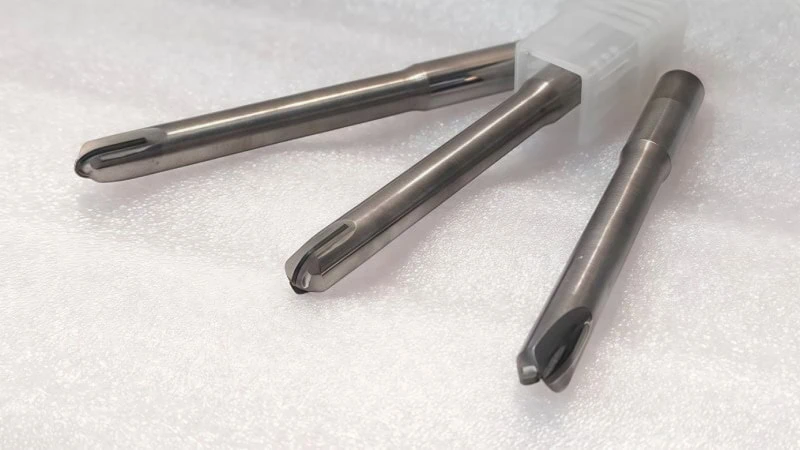
Which Materials and Applications Maximize the Benefit of PCD Ball Nose Tools?
Okay, so where exactly do these specialized PCD ball nose end mills deliver the biggest payoff in the workshop?
PCD ball nose end mills provide maximum benefits when machining highly abrasive non-metallic materials like composites (CFRP, MMC) and graphite, challenging non-ferrous metals such as high-silicon aluminum, copper, and brass, and specifically in applications requiring precision 3D contouring, profiling, and high-quality surface finishing, like those found in mold & die, aerospace, and automotive manufacturing.
Ideal Materials: High-Silicon Aluminum, CFRP, MMC, Graphite
Certain materials are notoriously tough on cutting tools because they act like fine sandpaper, wearing edges down quickly. This is where PCD truly steps up.
- High-Silicon Aluminum: Common in automotive parts (like engine blocks or pistons), this aluminum alloy contains hard silicon particles that rapidly wear out carbide tools. A PCD ball nose end mill, however, resists this abrasive wear, allowing it to maintain its precise radius for accurately machining complex shapes like piston bowls.
- Carbon Fiber Reinforced Polymers (CFRP): Used extensively in aerospace and high-performance automotive applications, CFRP is strong, lightweight, but extremely abrasive due to the carbon fibers. Machining complex curves or pockets often requires a ball nose tool, and PCD is essential to achieve reasonable tool life and prevent fiber breakout, ensuring smooth, accurate contours.
- Metal Matrix Composites (MMC): These combine metals (like aluminum) with reinforcing materials (like ceramics), making them strong but very abrasive. Again, PCD’s hardness allows the ball nose tool to effectively machine complex 3D shapes without rapid wear.
- Graphite: Often used for Electrical Discharge Machining (EDM) electrodes, graphite4 needs to be machined into precise, often complex shapes. It’s highly abrasive, making PCD ball nose tools the standard choice for maintaining accuracy and achieving fine finishes on these electrodes.
In all these cases, the challenge is not just the material’s abrasiveness but often the need to create intricate, curved shapes – the specialty of the ball nose – making the PCD ball nose combination uniquely effective.
Excelling in Non-Ferrous Metal Machining (Copper, Brass, Gold)
While not typically as abrasive as the materials above, other non-ferrous metals present different challenges where PCD ball nose tools excel, particularly for achieving high-quality surface finishes on complex geometries.
- Avoiding Built-Up Edge (BUE): Materials like aluminum (even lower silicon grades) and copper can be “gummy,” meaning they tend to stick to the cutting edge of carbide tools. This phenomenon, known as BUE, ruins surface finish. PCD has a much lower affinity for these materials, significantly reducing BUE.
- High-Quality Finishes: Consequently, when machining contoured surfaces, decorative features, or functional curved profiles on parts made of copper (e.g., complex heat sinks), brass, or even precious metals like gold, a PCD ball nose end mill can produce exceptionally smooth and clean finishes directly off the machine, often eliminating polishing steps.
Core Applications: Precision 3D Contouring and Profiling
At its heart, the ball nose end mill geometry is designed for one primary purpose: machining complex, three-dimensional surfaces that aren’t flat or have simple radii.
- What is 3D Contouring/Profiling? Imagine sculpting a complex shape out of a block of material – following curved paths in X, Y, and Z directions simultaneously using CNC machining. This could be shaping an aerodynamic surface, creating intricate molds, or carving detailed features.
- The Ball Nose Advantage: The rounded tip allows the tool to smoothly blend surfaces and create flowing curves without the sharp steps or facets that a flat or corner-radius end mill would leave behind in these types of operations.
- PCD’s Role: PCD enhances this by allowing these precise contouring operations to be performed for much longer periods without tool wear degrading the accuracy or finish, especially in the challenging materials mentioned earlier.
Therefore, any application requiring the generation of complex, non-planar surfaces is a prime candidate for using a ball nose end mill, and if the material is suitable for PCD, that combination often offers the best performance.
Optimizing Mold & Die Finishing Operations
The mold and die industry is a classic example where PCD ball nose end mills provide significant value. Molds for plastic injection, blow molding, or die casting often feature intricate, curved cavities and cores that define the shape of the final product.
- Surface Finish is Key: The finish quality inside the mold directly translates to the finish quality of the molded part. Achieving a near-mirror finish is often required.
- PCD Ball Nose Application: PCD ball nose end mills are frequently used for the final finishing passes inside aluminum molds. Their ability to maintain a sharp edge while cutting the aluminum alloy results in excellent surface finishes, drastically reducing the time-consuming and costly manual polishing traditionally required.
Use Cases in Aerospace and Automotive Component Manufacturing
Both aerospace and automotive industries rely heavily on components with complex shapes, often made from challenging materials.
- Aerospace: Think of machining large CFRP structural components (like sections of wings or fuselage) that require both material removal and smooth, contoured finishes. Other examples include finishing turbine blades or complex aluminum components for engines or landing gear where precise 3D shapes are essential.
- Automotive: Beyond engine parts like high-silicon aluminum pistons or transmission components with profiled features, PCD ball nose tools are vital for machining the molds used to create plastic interior parts (dashboards, door panels) and exterior components (bumpers, lighting housings).
In these industries, the drive for lightweighting (using composites and aluminum) combined with the need for complex aerodynamic or functional shapes makes the PCD ball nose end mill a critical tool for efficient and high-quality manufacturing.

How Do You Select the Correct PCD Ball Nose End Mill Specifications?
So you know you need a PCD ball nose end mill for its unique advantages and applications, but faced with various options, how do you actually pick the right size and features for your specific job?
Selecting the correct PCD ball nose end mill specifications involves carefully considering the required tool diameter and the crucial ball radius based on the part geometry, determining the appropriate number of flutes to balance surface finish needs with chip evacuation, matching the shank type and overall length for proper machine interface and reach, and deciding between standard or custom geometries for specific application demands.
Determining the Optimal Diameter and Tool Radius
The size of the end mill, particularly its diameter and the special ball radius, is fundamental to getting the job done right.
- Tool Diameter: This is the main width of the cutting tool. A larger diameter generally means a stronger, more rigid tool that can handle heavier cuts or resist vibration better. However, a larger diameter tool might not fit into smaller features or pockets on your part. You need to choose a diameter that provides enough stiffness but can still access all the areas you need to machine.
- Ball Radius (R): This is the defining feature of a ball nose end mill – it’s the radius of the rounded cutting tip (equal to half the effective cutting diameter right at the very end). The ball radius you choose directly impacts:
- Minimum Internal Corner: The tool cannot create an internal corner radius smaller than its own ball radius. So, if your part design has tight inside curves, you’ll need a tool with an equally small or smaller radius.
- Surface Finish & Step-Over: When finishing large, curved surfaces, the ball radius affects the size of the “scallop” left between passes. A larger radius generally allows for a larger step-over (the distance you move the tool sideways for the next pass) while maintaining a smooth finish, potentially reducing machining time. A smaller radius creates smaller scallops but may require smaller step-overs and thus more passes.
Choosing the right diameter and radius often involves balancing the need to fit into small features against the desire for rigidity and efficient finishing of larger areas. Keep in mind that standard tooling comes in specific diameter and radius combinations; always check supplier catalogs for available options that meet your geometric needs.
Impact of Flute Count on Finish and Material Removal
The number of flutes, or cutting edges, on the end mill plays a significant role in both the quality of the surface finish and how quickly you can remove material.
- More Flutes (e.g., 3, 4, or more):
- Pros: Can often achieve a smoother surface finish at a given feed rate because more cutting edges engage the material per revolution. May allow for higher feed rates in finishing operations.
- Cons: Less space between flutes for chips to escape. This can be an issue in “gummy” materials or when taking deeper cuts, potentially leading to chip packing.
- Fewer Flutes (e.g., 2 or 3):
- Pros: More room for chips to evacuate, which is better for roughing operations or materials that produce larger chips.
- Cons: Might require lower feed rates to achieve the same level of surface finish compared to a higher-flute tool.
For the precision finishing work often done with PCD ball nose end mills on complex 3D surfaces, higher flute counts are frequently preferred to maximize surface quality. However, the specific material being machined and whether you are roughing or finishing will influence the ideal choice. Suppliers offer various flute counts for different tool diameters, so consult their recommendations for your specific application.
Matching Shank Type and Length to Your Setup
The shank is the part of the tool held by the machine’s tool holder, and its compatibility and length are critical.
- Shank Type: Ensure the shank diameter and type (e.g., plain cylindrical, Weldon flat) match your machine’s tool holders for secure and accurate clamping. An improper fit can lead to poor performance, tool pull-out, or runout (wobble).
- Overall Length (OAL) and Length of Cut (LOC): OAL is the total tool length. LOC is the length of the cutting edges. The difference between these determines the reach – how deep the tool can machine into a cavity or past obstructions without the non-cutting part (shank) hitting the workpiece.
- The Reach vs. Rigidity Trade-off: Ball nose end mills are often needed for deep features, such as mold cavities or complex aerospace parts. While sufficient reach is necessary, remember that longer tools are inherently less rigid. An overly long tool is more prone to deflection (bending under cutting forces) and vibration, which can negatively impact dimensional accuracy and surface finish. Always choose the shortest tool possible that still provides the necessary reach for the job. Standard tool lengths vary, so check supplier options carefully.
Standard vs. Custom Geometries: When to Choose Which
Most common machining tasks can be handled by standard, off-the-shelf PCD ball nose end mills. However, sometimes a unique challenge requires a custom solution.
- Standard Tools: These are manufactured in common sizes, radii, lengths, and flute counts. They are generally more readily available and cost-effective. Always try to design your process around standard tooling if possible.
- Custom Tools: These are made-to-order for specific requirements. Situations where custom PCD ball nose tools might be necessary include:
- Needing an extra-long reach combined with a specific neck relief (a reduced diameter behind the cutting head) to access very deep features without the shank interfering.
- Requiring a non-standard ball radius to match a specific design feature precisely.
- Needing unique flute geometries or edge preparations optimized for a particularly challenging material or application.
While custom tools offer tailored solutions, they typically involve longer lead times and higher costs compared to standard options. Therefore, they are usually considered only when a standard tool cannot safely or effectively perform the required operation. Discuss your specific needs with your tooling supplier to see if a standard tool can be adapted or if a custom solution is truly warranted.
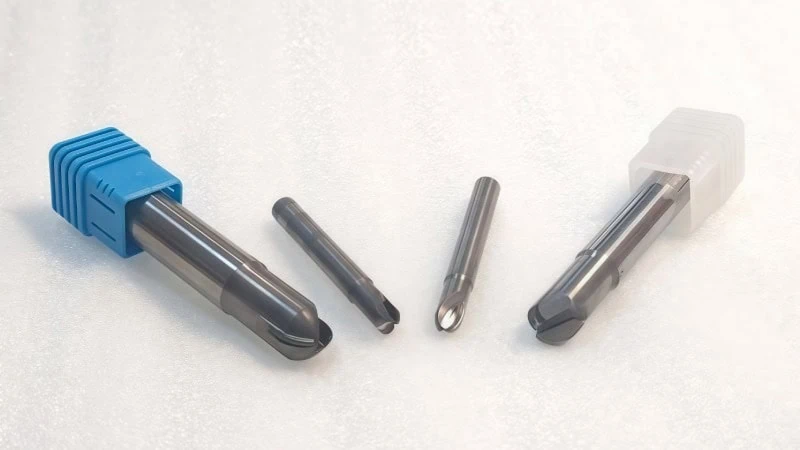
What Key Factors Contribute to Success Beyond the Tool Itself?
Choosing the right PCD ball nose end mill specifications is certainly important, but getting the best results involves more than just the tool’s geometry. What other factors play a crucial role in success?
Achieving success with PCD ball nose end mills extends beyond the tool specs; key contributing factors include ensuring consistent tool quality and performance from your supplier, calculating the true cost-effectiveness based on long-term value, utilizing a highly rigid and stable machine tool setup, applying appropriate starting speeds and feeds with careful optimization, and implementing effective coolant and chip management strategies.
Ensuring Consistent Tool Quality and Performance
While specifications on paper might look the same, the actual quality of PCD tools can vary between manufacturers. Consistent quality is vital for predictable and reliable machining, especially when aiming for the high precision often associated with ball nose finishing work.
Factors influencing quality include:
- PCD Grade and Structure: The size of the diamond grains and how they are bound together affects both hardness and toughness.
- Brazing Integrity: How securely the PCD tip is attached (brazed) to the carbide body is critical for tool strength and longevity. A weak braze can lead to premature tool failure.
- Grinding Accuracy: The precision used to grind the tool’s geometry, especially the critical ball radius and cutting edges, directly impacts performance and the final part accuracy.
Sourcing tools known for strict quality control processes helps ensure you receive a consistent, high-performing product every time, minimizing unexpected issues during production.
Calculating the True Cost: Initial Investment vs. Long-Term Value
It’s true that PCD ball nose end mills typically have a higher purchase price compared to their solid carbide counterparts. However, focusing solely on the initial cost can be misleading. To understand the real value, consider the Total Cost of Ownership (TCO)5 or cost-per-part.
Here’s how PCD often wins in the long run, especially in suitable applications:
- Extended Tool Life: As discussed earlier, PCD lasts much longer, meaning fewer tools need to be purchased over time.
- Increased Productivity: Higher machining speeds and reduced tool change downtime lead to more parts produced in the same amount of time.
- Improved Part Quality: The superior finishes often achieved, particularly with the ball nose geometry in finishing operations, can reduce or eliminate costly secondary operations like manual polishing.
When you factor in these savings, the higher initial investment in a PCD ball nose tool can result in a significantly lower cost for each finished workpiece, making it a very economical choice for high-volume or demanding jobs like mold finishing.
The Critical Role of Machine Tool Rigidity
Using an advanced tool like a PCD end mill requires a capable machine. Rigidity – the machine’s ability to resist bending and, crucially, vibration during cutting – is paramount.
Why is rigidity so important for PCD ball nose tools?
- PCD Brittleness: PCD is extremely hard but also more brittle (less tough) than carbide. Excessive vibration from a non-rigid machine, spindle, or workholding setup can easily chip or fracture the delicate PCD cutting edge, leading to premature tool failure.
- Surface Finish: For the smooth, precise surfaces expected from ball nose finishing, any vibration will translate into visible imperfections like chatter marks, ruining the part’s quality.
- Dimensional Accuracy: Vibration and deflection can also lead to inaccuracies in the final dimensions of the machined part.
Therefore, to fully leverage the benefits of PCD ball nose end mills, especially for high-precision finishing, using them on a well-maintained, robust, and highly rigid machine tool system is essential.
Starting Point: Recommended Speeds and Feeds Parameters
Running the tool at the correct cutting speed (how fast the edge moves through the material, often related to RPM or Surface Speed) and feed rate (how fast the tool advances into the material) is crucial for performance, tool life, and surface finish.
These parameters are influenced by many factors:
- The specific material being machined (e.g., high-silicon aluminum vs. CFRP).
- The tool’s diameter, ball radius, and number of flutes.
- The type of operation (e.g., roughing vs. fine finishing with the ball nose).
- The rigidity of the machine and setup.
- The coolant strategy being used.
It is vital to understand that manufacturer or supplier recommendations for speeds and feeds are generally intended as starting points only. Achieving optimal results often requires careful testing and fine-tuning based on your specific machine, material batch, and desired outcome (e.g., maximizing speed vs. maximizing finish quality).
Crucially, always consult your tooling supplier for recommended starting parameters for your specific PCD ball nose tool and application, as these can vary significantly based on the tool’s design and intended use. Do not assume parameters from one tool or supplier will work for another.
Effective Coolant Application and Chip Management
Managing heat and removing chips effectively from the cutting zone are final key factors for success.
- Coolant Functions: Coolant helps to control the heat generated during cutting (PCD performance can degrade at excessive temperatures), lubricate the cutting action, and, importantly, flush away chips.
- Chip Evacuation: Preventing chips from being recut is critical. Recutting chips can damage the delicate PCD edge and severely degrade the surface finish – a major concern when using ball nose tools for high-quality finishing. Effective chip removal becomes even more important when machining deep pockets or cavities where chips can easily become trapped.
- Application Methods: Depending on the material and operation, different strategies are used:
- Flood Coolant: A high volume of liquid coolant directed at the cut zone. Common for many non-ferrous metals.
- Minimum Quantity Lubrication (MQL): A precisely controlled mist of oil in an air stream.
- Air Blast: Often sufficient for materials like graphite or some composites where liquid coolant is undesirable, primarily focused on chip evacuation.
Ensuring your chosen method effectively cools the tool tip and, just as importantly, clears chips away from the cutting path, especially in complex ball nose contouring operations, is essential for achieving both long tool life and excellent part quality.
Conclusion
In conclusion, PCD ball nose end mills represent a specialized yet highly effective solution for specific machining challenges. They truly shine when tasked with creating complex 3D contours and achieving exceptional surface finishes, particularly in abrasive non-metals and non-ferrous materials common in industries like aerospace, automotive, and mold making. While their initial cost is higher, their extended tool life, speed capabilities, and the quality of finish they produce often lead to significant long-term value. However, realizing these benefits hinges not only on selecting the correct tool specifications for the job but also on ensuring high-quality tooling, utilizing a rigid machining setup, and carefully managing operating parameters like speeds, feeds, and coolant. When applied correctly within their niche, PCD ball nose end mills are a powerful tool for boosting productivity and achieving superior part quality.
For specific requirements or a quote on PCD Ball Nose End Mills, please send us your inquiry.
References
- PCD (Polycrystalline Diamond)1 – ZYDiamondTools blog post providing a comprehensive overview of PCD tooling.
- sintering process2 – ScienceDirect topic page explaining the sintering process used in creating materials like PCD.
- key differences3 – ZYDiamondTools blog post comparing PCD and Carbide cutting tools.
- graphite4 – Encyclopedia Britannica entry describing the properties and uses of graphite.
- Total Cost of Ownership (TCO)5 – ZYDiamondTools guide explaining the TCO concept and application for superhard tooling & abrasives.
